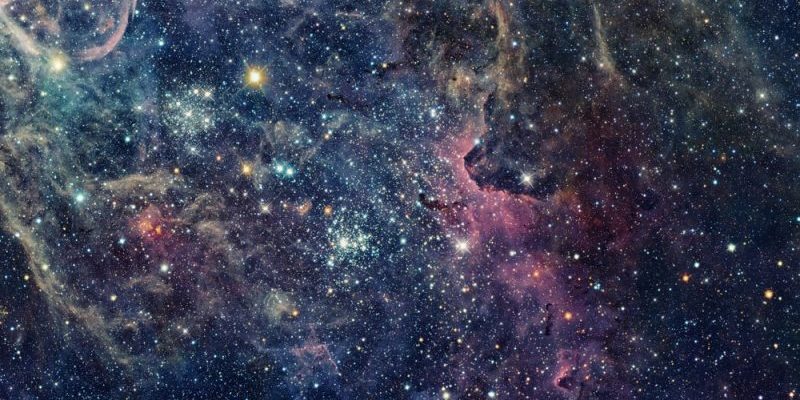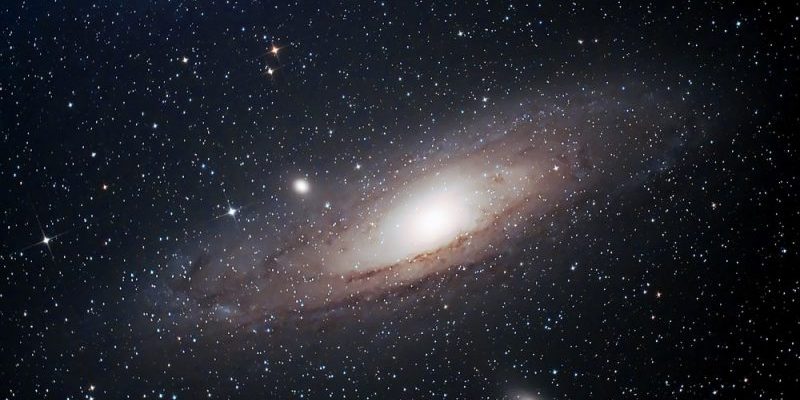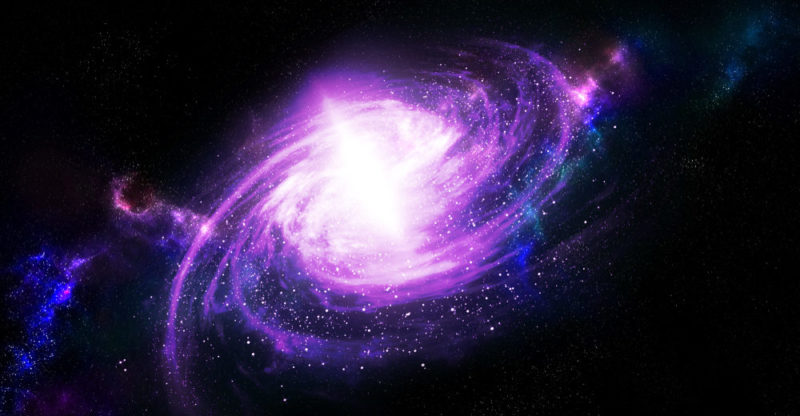We explain what galaxies are, how they are composed, and the types that exist. Also, what are its general characteristics and training?
What are galaxies?
Galaxies are collections of stars, planets, energy, and cosmic material bound together by gravitational forces. These sets are of such a size that the number of stars that form them can exceed billions.
In fact, our galaxy, the Milky Way , has about 100 billion stars. However, there are galaxies larger and smaller than ours . Its diameter is usually between one hundred and one hundred thousand parsecs.
It has been calculated that there are at least two trillion galaxies in the observable universe . Although clusters of stars have been observed since the mid-nineteenth century, it was not until 1923 that Edwin Hubble demonstrated the existence of galaxies other than our own.
Composition
Galaxies are made up of:
- stars. Luminous plasma bodies with their own gravity .
- planets . Bodies smaller than stars, with their own gravity, but which also orbit around a star, attracted by its gravity.
- nebulae. Sets of gases and cosmic dust.
- ultradense bodies. White dwarf stars, pulsars and black holes.
- Dark matter. Type of matter that does not emit any type of radiation.
Spirals

Spiral galaxies are flattened like a rotating disk . At the center of the disk are the oldest stars, and their concentration produces a bulge from which their curved arms extend. There are three types of spiral galaxies:
- With star-forming arms. Your arms can be closer to or further from the center.
- Barred. They have a central band of stars.
- Intermediates. They have two spiral arms very close to the central bar of stars.
Elliptical
 They are those galaxies that have an ellipse shape, that is, they vary from a round to an oval shape . Its shapes are classified from E0 to E7, but E0 the roundest shape and E7 the longest shape.
They are those galaxies that have an ellipse shape, that is, they vary from a round to an oval shape . Its shapes are classified from E0 to E7, but E0 the roundest shape and E7 the longest shape.They are characterized by a low rate of star formation and little interstellar matter. However, the largest known galaxies are elliptical.
There is a theory that elliptical galaxies are mostly the result of the collision and merger of two different galaxies.
An example of an elliptical galaxy is the Sombrero Galaxy.
Irregular
 Galaxies that do not have a defined shape that allows them to be included in any of the three preceding groups are called "irregular".
Galaxies that do not have a defined shape that allows them to be included in any of the three preceding groups are called "irregular".Many of these galaxies were originally spiral-shaped but were distorted by the gravity of a larger nearby galaxy.
An example is the Large Magellanic Cloud.
lenticular
They are galaxies that are in a transition state between an elliptical galaxy and a spiral galaxy. They are highly condensed in the center, which is surrounded by an extensive envelope.An example of a lenticular galaxy is Centaurus A.
Active
 It is estimated that at the center of most galaxies there is a black hole . When the black hole is active, it attracts matter (mainly gas and dust) and releases large amounts of energy .
It is estimated that at the center of most galaxies there is a black hole . When the black hole is active, it attracts matter (mainly gas and dust) and releases large amounts of energy .This causes the electromagnetic radiation of the entire galaxy to be much greater than that of other galaxies, and that is why they are called "active galaxies".
Among the active galaxies are the Seyfert galaxies , which are characterized by a very bright nucleus.
Also the Stardust galaxies, which contain a supernova , that is, the result of the explosion of a dead star. Radio galaxies are also active and emanate two large jets of particles.
Collapse formation theory
 One of the theories about the origin of galaxies holds that, prior to their origin, there were large gas clouds even larger than today's galaxies.
One of the theories about the origin of galaxies holds that, prior to their origin, there were large gas clouds even larger than today's galaxies.The internal gravity of the cloud causes it to collapse, that is, to concentrate in a disk far from the edges of the cloud.
The shape of the resulting galaxy would depend, according to this theory, on the movement of the cloud: if it rotates slowly, when it collapses its stars will form before the disk forms and the galaxy will be elliptical. But if it rotates faster, the disk that shapes the galaxy forms before the stars and the galaxy will have a spiral shape.
Fragmentation formation theory
The latest theory of galaxy formation says that gas clouds split into smaller clouds , from which the first structures arose.These structures would later be grouped into larger structures , forming the current galaxies.
Color
 The color of each galaxy that we perceive from Earth allows us to know its composition . Galaxies that are reddish in color lack large amounts of gas or dust and therefore do not form as many stars.
The color of each galaxy that we perceive from Earth allows us to know its composition . Galaxies that are reddish in color lack large amounts of gas or dust and therefore do not form as many stars.On the contrary, those that are perceived as bluish are those with the largest population of stars .
Superstructures
In addition to being huge structures, galaxies clump together to form larger structures . In fact, only 5% of known galaxies are isolated.However, these isolated galaxies may in turn be the result of the merger of two or more smaller galaxies or even have small satellite galaxies.
The above content published at Collaborative Research Group is for informational and educational purposes only and has been developed by referring to reliable sources and recommendations from technology experts. We do not have any contact with official entities nor do we intend to replace the information that they emit.
MA student of the TransAtlantic Masters program at UNC-Chapel Hill. Political Science with a focus on European Studies. Expressed ideas are open to revision. He not only covers Technical articles but also has skills in the fields of SEO, graphics, web development and coding. .
Leave a reply
Your email address will not be published. Required fields are marked *Recent post

Sport: What Is It, Types, Risks, Features, Characteristics and Examples

Dogs: Emergence, Features, Characteristics, Feeding and Breeds

Story: Definition, Elements, Structure, Features and Characteristics

